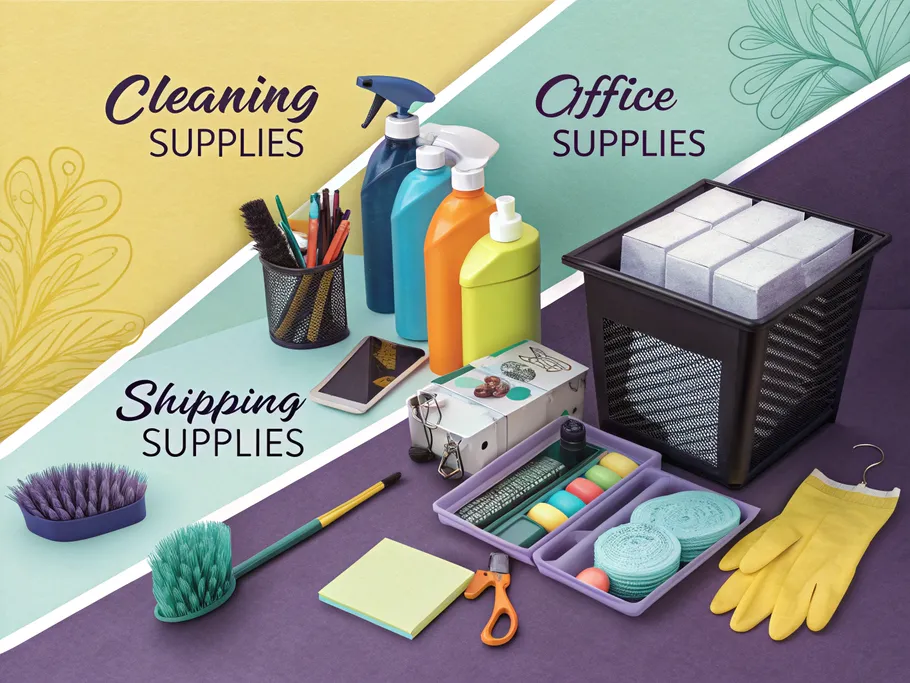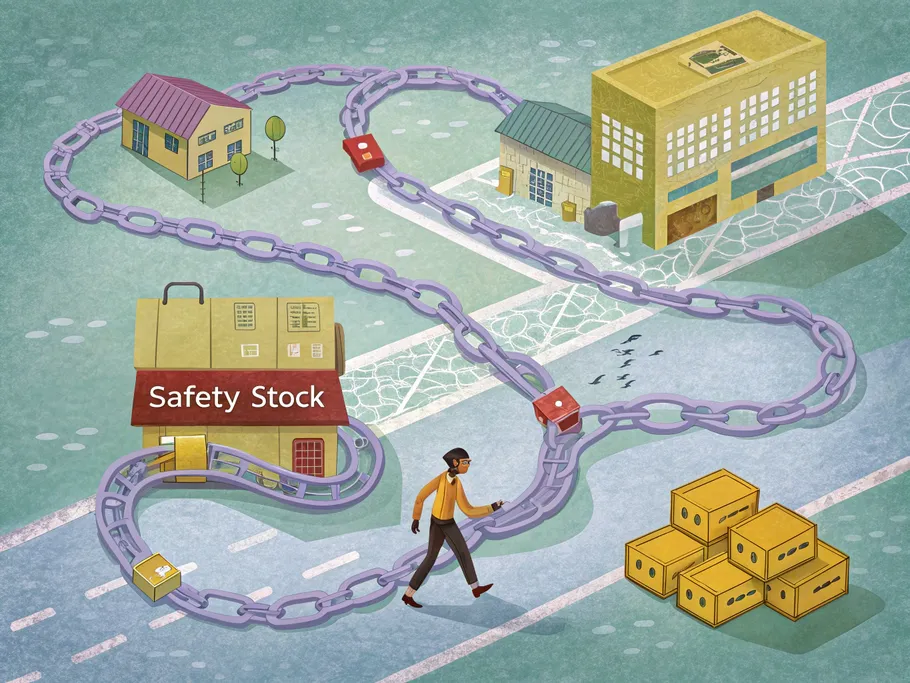The Case of the Vanishing Inventory: Why Your Supplies Matter More Than You Think
Picture this: It’s the holiday season, and Sarah, a small business owner selling handmade crafts, is racing to fulfill a flood of last-minute orders. She reaches for a roll of yarn—only to discover it’s the last one, and she’s out of shipping boxes and packing tape too. Panic sets in. Orders are delayed, customers are unhappy, and profits vanish. Sound familiar? This is a common scenario for many small business owners who don’t realize just how crucial their supplies are. We’re talking about those seemingly insignificant items like office supplies, cleaning products, or shipping materials—the small things that make a big difference.
Supplies aren’t just clutter; they’re a tangible investment in your business’s operations and growth. Recognizing them as such is the key to avoiding a financial meltdown.
Supplies are assets, until you use them. Then they’re just another expense—a tiny, pathetic reminder that everything you acquire eventually becomes a drain.

Decoding the Basics: What Exactly Are Supplies?
So, what exactly are supplies? They’re the items your business uses in its day-to-day operations. They have a limited lifespan because they’re consumed over time. Whether it’s office supplies, cleaning products, or shipping materials, supplies are anything that keeps your business running smoothly.
Let’s break it down with a few examples:
Cleaning Supplies: Disinfectants and sanitizers, All-purpose cleaners, Toiletries and glass cleaners, Furniture polish and floor cleaners, Brushes, sponges, gloves, and PPE.
Office Supplies: Paper products and writing instruments, Desk accessories and filing/storage items, Office machines and technology products.
Shipping Supplies: Boxes, envelopes, bubble wrap, packing peanuts, Tape, labels, pallets.
Supplies vs. Assets: Untangling the Accounting Jargon
Here’s the deal: Assets are resources owned by a business that provide future economic value. Think of things like cash, property, equipment—anything that helps generate income or reduce expenses.
Here’s the kicker: Supplies are assets too, but with a twist. Supplies are assets before they’re used up. When you purchase supplies, they have value and they belong to your company. It’s only when you start using them that they become expenses.
The Life Cycle of a Supply: From Asset to Expense
Here’s how it works in accrual accounting:
- Cost Recording: When you buy supplies, you record them at their cost as assets.
- Expense Recognition: As you use these supplies (like when an employee grabs a pen to jot down notes), their value shifts from the “Supplies” asset account to a “Supplies Expense” account.
This transformation from asset to expense happens gradually, reflecting the matching principle, which ensures that expenses are recognized in the same period as the revenues they help generate.
Supplies used in production often factor into the “cost of goods sold” (COGS), impacting the calculation of gross profit (the difference between sales revenue and COGS).

High-cost items are typically capitalized and expensed over time, while low-cost items may be expensed immediately for simplicity, depending on the company’s accounting policy.
Where Do Supplies Hide on the Balance Sheet?
Here’s a little secret: On your balance sheet, supplies usually show up under inventories within current assets, rather than as a separate line item.
They’re considered current assets because they’re expected to be used or converted into cash within one year or an operating cycle (whichever is longer), unlike long-term assets like buildings or machinery.
Taming Your Supplies: Practical Tips for Tracking and Management
Good supply management is all about avoiding those frustrating moments when you’re out of stock or drowning in excess inventory. Here are some practical tips to keep your supplies in check:
- Simple Inventory Lists: For small businesses, a straightforward spreadsheet can do wonders. List your supplies, quantities, reorder points, and suppliers to stay organized.
- Inventory Management Software: As your business grows, consider investing in software that tracks your stock in real time, automates orders, and provides usage reports.
- Regular Stocktaking: Periodically count your supplies to detect discrepancies, theft, or damage. This ensures accurate financial records and helps you avoid costly surprises.
- Understand Valuation Methods: FIFO (First-In, First-Out) and LIFO (Last-In, First-Out) are two common methods for valuing your supplies. FIFO assumes you use your oldest supplies first, while LIFO assumes the opposite. Each method has its own impact on your financial statements and taxes, so consult your accountant to choose the best approach for your business.
Supply Chain Disruptions: Navigating Uncertainty and Protecting Your Business
Global events have shown us how fragile supply chains can be. Delays from key suppliers can grind your operations to a halt, which is why knowing your inventory levels is crucial for forecasting and planning.
To minimize disruptions, consider these strategies:
- Diversify Suppliers: Avoid relying on a single supplier by having multiple options for critical items.
- Maintain Safety Stock: Keep a buffer of essential supplies to cover unexpected delays or demand spikes.
- Build Strong Relationships: Foster good communication and trust with your suppliers to ensure priority treatment during shortages.

Sustainable supply chain management is becoming increasingly important. Consumers and investors are looking for businesses that prioritize ethical sourcing, waste reduction, and carbon footprint minimization. This might involve choosing eco-friendly supplies or sourcing locally to reduce environmental impact and support local economies.
Tax Implications: How Supplies Affect Your Bottom Line
Here’s some good news: Supplies used in your business are generally tax-deductible expenses.
When you expense supplies, you reduce your taxable income, which in turn lowers your tax liability.
But here’s the catch: Accurate tracking of purchase and usage dates is crucial to avoid overstating profits and paying more taxes than necessary. Detailed records also support your deductions during audits and help you maximize tax benefits.
Beyond the Basics: Scaling Your Business and Optimizing Supply Management
As your business grows, so does the complexity of managing your supplies. Here are some advanced strategies to keep things running smoothly:
- Inventory Turnover: This metric measures how often you sell or use your inventory within a specific period. High inventory turnover indicates that you’re efficiently using your supplies, while low turnover suggests overstocking or slow sales.
- Automation: Embrace technology to streamline your processes. Tools like barcode scanners, integrated inventory-accounting software, and data analytics can improve accuracy and forecasting.
Real-World Examples: Putting Supply Management into Practice
Let’s see how this all plays out in the real world. Consider a graphic design agency managing these supply-related expenses:
- Labor costs (wages and benefits)
- Rent or property expenses
- Equipment acquisition
- Supplies for daily operations
- Advertising and marketing
- Taxes and fees
By budgeting for supplies with the same diligence as other expenses, the agency can make strategic purchasing decisions, ensuring they have what they need without tying up unnecessary cash.

Takeaways
Unused supplies are assets; used supplies are expenses.
Properly recording supplies ensures accurate financial reporting, enabling informed decisions, effective cash flow management, and transparent communication with investors and tax authorities.
Sometimes the things we use every day, even the smallest ones, hold more quiet value than we realize. Understanding how these resources contribute to our journey, even as they are used up, brings a gentle clarity. It reminds us that every piece plays a part in building and sustaining what we care about.
